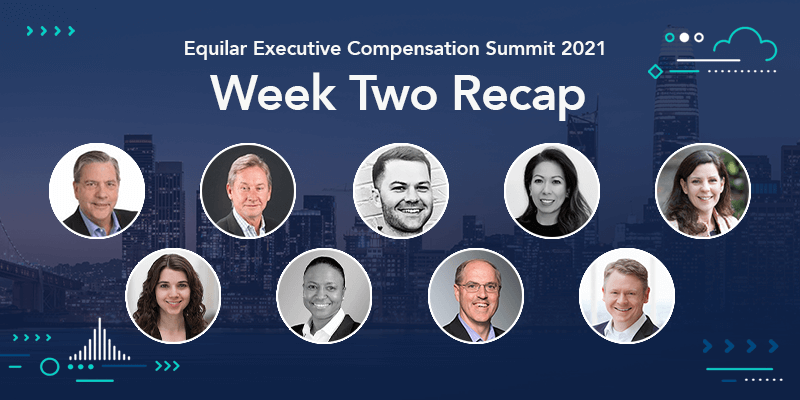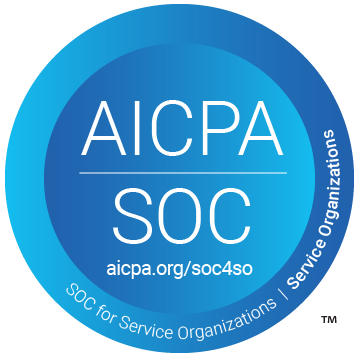2021 Equilar Executive Compensation Summit: Week Two Highlights
How to Support ESG and Human Capital Initiatives Through Compensation
June 23, 2021
Dan Marcec

Companies are grappling with the most effective ways to use compensation to support initiatives targeting sustainability, diversity, equity & inclusion (DE&I), and other human capital management (HCM) issues. While tried and true compensation strategies are still valid, paying executives solely based on financial performance and providing general stock purchase plans for employees are no longer sufficient on their own.
Two sessions at the 2021 Equilar Executive Compensation Summit, “Tracking Emerging Trends in Human Capital Management and ESG Disclosures & Evolving Compensation Design,” and “Behavioral Economics: A Key to Understanding Responses to Compensation Changes” enlisted experts to discuss these changing perspectives on pay and benefits.
How Executive Compensation Is Incorporating ESG
Public companies have received increasing pressure from institutional investors and other stakeholders over the past few years to improve disclosures, culminating with new SEC guidelines on HCM in 2020, with additional ESG requirements likely to come sooner than later. Many companies are already voluntarily disclosing environmental goals and diversity scorecards, but in the absence of standardization, investors often have trouble making comparisons that help them understand the true impact across their portfolios.
That’s where executive compensation comes in. At this point, companies are in the process of tying these issues together and attempting to bridge gaps. Yet CEO compensation plans, especially long-term incentive plans, have not utilized many ESG metrics to date. According to Equilar data, just 3% of the largest U.S. companies by revenue tied long-term executive compensation to any ESG measurement in the most recent fiscal year.
“We’re looking at metrics tied to material areas of risk, and it’s really helpful as an investor to see that tied together with intentionality on the part of management and the board,” said Sarah Relich, a Director at Vanguard. “We want to see metrics with a link to sustainability and clear disclosure on why those were selected.”
While long-term metrics have not yet found a firm foothold, annual incentive plans have started to include measurable items like workforce diversity, percentage representation at different levels of the organization for women and minorities, reducing greenhouse gas emissions from their operations or the energy they purchase (Scope one and two), supplier diversity, employee satisfaction and employee safety. In addition, they also often include ratings from organizations such as the Sustainability Accounting Standards Board (SASB), Task Force on Climate-related Financial Disclosures (TCFD) and the Global Reporting Initiative (GRI).
In the absence of regulated, standardized disclosure rules, investors are looking for signals that indicate progress, recognizing that in the short term those may be qualitative.
“All compensation design is a balance, and it’s never either short or long term,” said David Bixby, a Lead Consultant with Meridian Compensation Partners. “To get climate and diversity right, or close to right, it’s going to have to happen over multiple years, so you use the short-term plan to hold people accountable for achieving things that will set you up for the long term. Some might be deliverables, some might be milestones, some might be more squishy.”
Tanya Levy Odom, a Director on the BlackRock Investment Stewardship (BIS) Americas team, agreed from the investor perspective. She said that even though it’s unrealistic to expect a management team to be intact for 30 years, companies have to invest in the interim steps and communicate the challenges in getting where they need to be. In addition, once an ESG goal is achieved, that doesn’t mean the efforts end.
“We’re taking a deeper dive into climate initiatives and DE&I and asking for that progress every year—are companies just hoping they make it to the end goal, or are they making incremental gains year over year?” she said. “We are looking for the correlation between pay and performance, and it’s a never ending story when it comes to environmental goals. I can’t imagine a place where our effect on the planet doesn’t need some improvement.”
How to Instill Ownership Culture Outside of the C-suite
CEOs and board members are invested in their companies’ success at the highest level—both as a result of their job description itself, and through clear financial incentives. Given that they’re in direct communication with investors and have a broad view of the issues, they often have a clear directive, or at least an idea, on how to move the company forward on ESG.
At the same time, employees (and employee prospects) are a key catalyst in driving these changes. Employee equity programs are designed to create ownership across multiple levels of the organization, but team members do not set the strategy, nor do they have nuanced performance incentive plans tied directly to company-wide goals. Therefore, companies are asking themselves how to give their workforce the tools to drive the vision forward.
According to Dr. Bill Castellano, Chair of the Human Resource Management department and Professor of Strategic HR Management at Rutgers University School of Management and Labor Relations, behavioral economics should be driving these decisions as companies consider how to engage and incentivize employees. There is not a one-size-fits-all strategy that’s effective for public companies, but he said that the most successful programs combine long-term equity with short-term profit sharing, which increases employees’ stakes and helps their individual long-term wealth.
“Economics over the past century assumes people are rational, but people make investment decisions on emotions and biases,” said Castellano.
A panel of issuers including Elisa Wyman, Senior Vice President of Rewards, Wiley; Anne Roest, Global Vice President of Total Rewards and HR Technology, Vontier Corporation; Will Foster, Vice President of Total Rewards and Talent Acquisition, Krispy Kreme, shared their strategies to support employees across the company given disparate needs and personal goals.
According to the panel, complementary programs for creating ownership culture include information sharing about strategy, finance, and day-to-day business decisions, empowering employees with authority and responsibilities, involving employees in decision making, investment in employee training, and not just offering, but ensuring that financial wellness programs get used.
The bottom line is that from the C-suite to the front line, many different factors affect employment decisions. Companies need to consider the types of employees they want to attract and structure their benefits and compensation systems around those groups of workers. Employee attraction, engagement, and retention are a key part of measuring success.
“We’re experiencing the biggest upheaval I’ve seen in the corporate world in my 35-year career,” said Dave Curran, Chief Sustainability and Environmental, Social and Governance (ESG) Officer for Paul, Weiss, Rifkind, Wharton & Garrison LLP. “One of the largest costs is hiring and retaining employees, which is not put in any figures as far as I know in terms of public disclosures. Companies often ignore the downside of losing employees, and those measures need to be balanced out with more modern ways of looking at organizations.”
He noted that disclosures don’t make companies more diverse or inclusive. They are the aftermath of what’s already taking place. Young people today are deciding what they buy, where they buy and where they work based on reputation. Accounting systems that just look at hard assets are important, but they don’t reflect these reputational elements.
“Long term, your company is at risk if it’s losing talent because you’re not inclusive. That’s also true of companies not good in the ‘E’ [environmental] area, because people don’t want to work for them,” Curran said. “For a while it’s been the wild west, and we need guidance from regulators. Will they get it perfect? No. That’s why companies should be leaning in. If Vanguard and BlackRock think it’s material, it’s material.”
Several other sessions were held during week two. If you previously registered or attended this year’s Summit, visit our Summit homepage to view replays for each session. For those who did not register, please contact us at events@equilar.com to request replays of our Summit sessions.
Contact

Dan Marcec
Senior Editor at Equilar
Dan Marcec, Senior Editor at Equilar, authored this post. Please contact Amit Batish, Director, Content & Communications, at abatish@equilar.com for more information on Equilar research and data analysis.
 Solutions
Solutions











